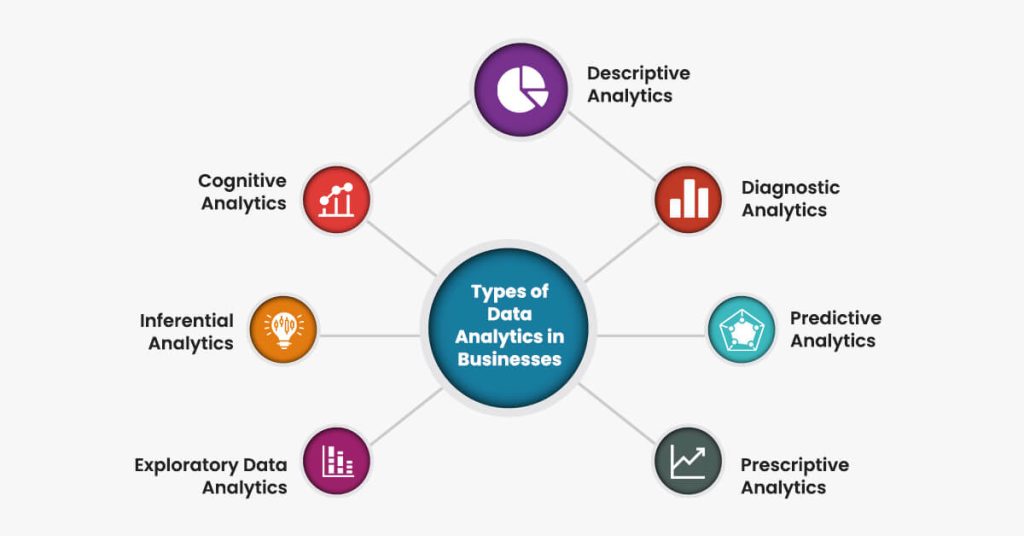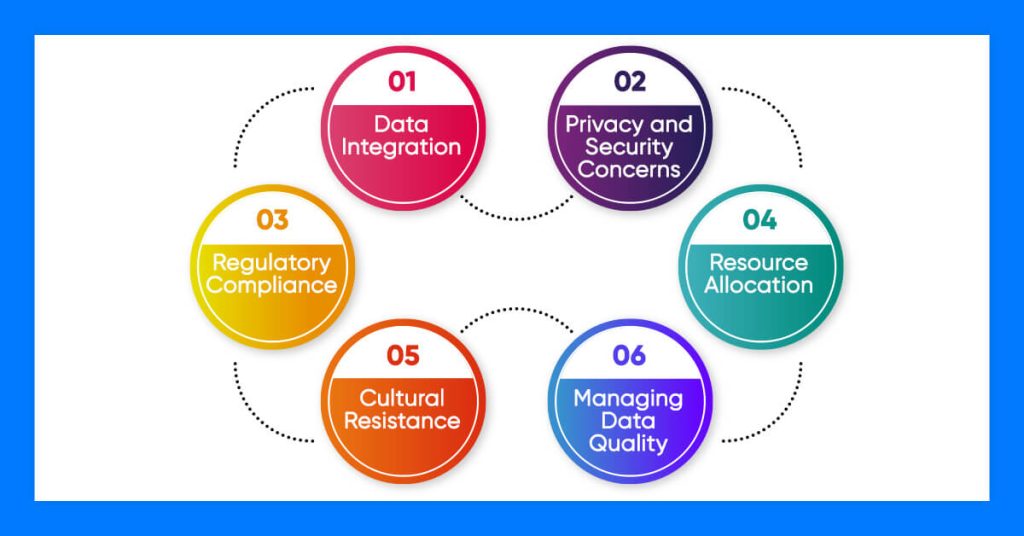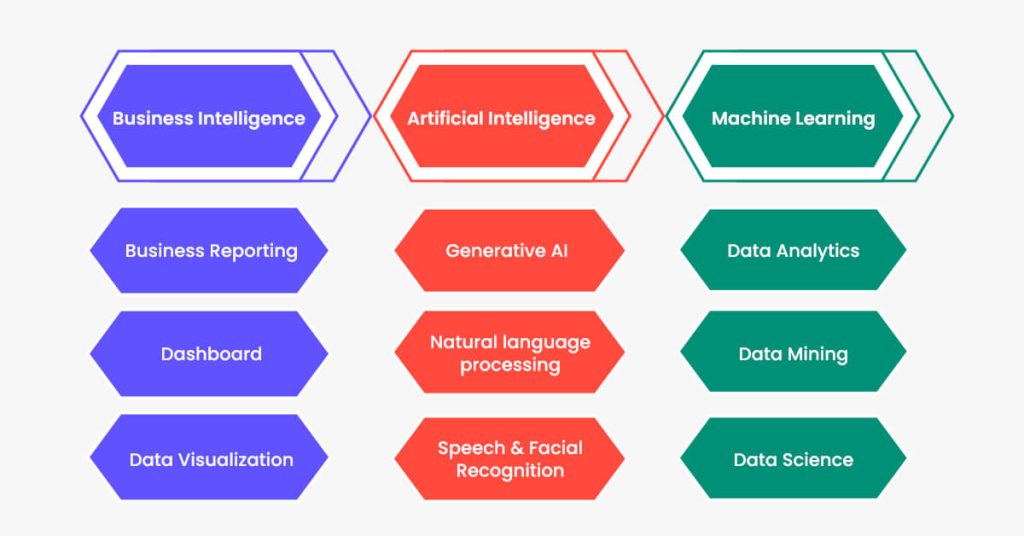Quick Summary:
Understand data analytics and types of data analytics that helps in transforming business operations. We will also understand technologies utilized and benefits of data analytics for smooth decision making processes. In this blog, we will also analyse how AI, BI, and ML in Data Analytics helps in boosting the data analysis processes.
Introduction
Data has become the cornerstone of the business economies. As companies strive for fresh growth, 2X-3X performance upgrades, and deeper customer connections, the urgency to capitalize on data is unavoidable. Organizations are resorting to collecting, tabulating, and analyzing data for insights. These insights are leveraged for optimal and high-speed decisions.
Businesses that collect data from their sales channels, marketing channels, customer interaction touchpoints, or even their competitors’ or industry data can analyze it to find patterns, emerging trends, or hidden insights to propel their business further. The analysis part of the data plays a critical role for businesses and business data analytics is a complete science in itself. It integrates the tools, technologies, platforms, processes, and frameworks required to collect, mine, analyze, and present the data for deriving actionable insights.
This article focuses on the role data analytics plays in providing decision-making competencies and competitive capabilities to businesses.
Let’s start with the types of data analytics for businesses.
Types of Data Analytics in Businesses

1. Descriptive Analytics
Descriptive analytics is a straightforward form of data analysis that uses both current and past data available for any business to pinpoint patterns, trends, and relationships. The form is primarily used for customer preference analysis or behavior metrics.
For example, streaming platforms like YouTube, Netflix, Disney+Hotstar, etc. use descriptive analytics to identify what their subscribers like, and based on that they suggest TV shows, movies, and web series. Aggregated survey reports, engagement reports, web traffic data graphs, demand trends, etc, are forms of descriptive analytics.
2. Diagnostic Analytics
4. Prescriptive Analytics
Prescriptive analytics evaluates all factors, data sets, and real-time trends to identify the best possible course of action. It guides businesses in taking subsequent steps. For example, it can provide recommendations and suggestions to improve pricing and optimize resources. When businesses want to know the answer to what they should do? They have to turn to prescriptive analytics.
Prescriptive models ensure that decisions are supported by data, minimizing the reliance on intuition or emotional influences. Media organizations utilize prescriptive analytics to enhance their advertising tactics. This method enables them to target the optimal audience and manage their budget more efficiently.
5. Exploratory Data Analytics (EDA)
Exploratory analytics is geared towards examining data to uncover hidden relationships and insights. It is a leap over other analytics types and it identifies correlations that are difficult to find in descriptive or prescriptive analytics. Exploratory is deep analysis with highly sophisticated tools (statistical and scientific).
Exploratory analysis uses advanced techniques like univariate analysis (histograms, box plots, bar charts, etc.) bivariate analysis (scatter plots, cross-tabulation, covariance), multivariate analysis (pair plots, principal component analysis.
Its use cases include examining customer feedback to detect hidden sentiments or deeply scrutinizing sales data to discover unforeseen correlations between products. Analyzing social media data to identify new audience segments.
6. Synthetic data for data analytics (Exploratory Analysis)
AI-driven algorithms produce synthetic data after being trained on high-quality real-world datasets. AI and ML initiatives for data analytics require big data sets. Due to data privacy and accessibility hurdles created by regulations like GDPR, HIPAA, etc., data scientists and business analysts are using synthetic data for exploratory studies and bridging the data gap. This synthetic data maintains the predictive abilities, statistical characteristics, and analytical trends the same as the original data sets but eliminates privacy issues by adding a layer of anonymity to it.
7. Inferential Analytics
Inferential analytics involves making inferences (extrapolating insights) based on a sample of data. It uses statistical methods to draw conclusions and make predictions about larger data sets. Businesses that need customer surveys or research insights go for inferential analytics.
Prominent use cases of inferential analytics are conducting surveys and using the results to infer the preferences of the entire customer base. Analyzing a sample of product reviews to make generalizations about overall customer satisfaction. Using sample data to estimate the impact of a new marketing strategy on future sales.
8. Cognitive Analytics
Cognitive analytics employs machine learning (ML), probabilistic reasoning, natural language processing (NLP), and other sophisticated methodologies to analyze contexts and enable businesses to make data-driven decisions instantly. Cognitive systems evolve and upgrade themselves based on data interactions.
A physician, for instance, can utilize cognitive analytics to swiftly sift through patient records, medical literature, clinician notes, etc. By examining customer information, including their buying patterns, browsing habits, and social media interactions, cognitive analytics systems allow online merchants to provide customized product suggestions and focused marketing campaigns.
Organizations that advance their analytical capabilities as cognitive technologies progress, those that require real-time insights from vast and varied data sources may gain a notable competitive edge through cognitive analytics.
Bridge Data Gaps With Advanced Business Data Analytics Solutions
Technologies Used for Data Analytics
If you want to benefit from data analytics, you need to have a standard process, laid guidelines, the right tools, tech integration, and knowledge of data analytics frameworks to achieve the best outcomes out of your data analytics efforts. Below are some of the tech requirements for playing the data analytics game like a Pro.
|
Category |
Technology |
|
Data Collection |
|
|
Data Processing |
|
|
Data Analysis |
|
|
Data Visualization |
|
|
Data Mining |
|
|
Data Warehousing |
|
|
Data Integration and Orchestration |
|
Benefits of Data Analytics for Businesses

Data analytics provide businesses with exceptional decision-making capabilities, competitive advantage, risk management competencies, and the ability to optimize their various operational processes.
Let us discuss the comprehensive benefits of data analytics in detail.
1. Improved Decision Making
Data analytics provides precise insights to businesses based on actual data rather than assumptions or guesswork. These insights into competitor analysis, market situations, or customer preferences/behavior can help businesses make decisions that are unbiased and based on qualitative and quantitative data analysis.
Data insights in hand eliminate delays and make businesses more agile in their decision-making. Data analytics coupled with strong data collaboration platforms remove departmental silos and promote collaborative and more inclusive decision-making.
2. Advanced Risk Management
Internal disruptions and limitations like flawed processes, poor control mechanisms, etc., or external factors such as macroeconomic shifts, regulatory changes, and climate issues can create short-term or long-term risks for businesses.
Conventional risk management methods are not effective as they often rely on subjective assessments and personal judgments. For example, conservative management can make decisions based on traditional approaches that may no longer be relevant in contemporary times. This is where modern data analytics addresses the limitations of traditional risk management approaches.
Modern data analytics leverages various data sources—including historical records, external datasets, and real-time information—to identify correlations, patterns, and trends that could indicate possible risks.
3. CX Personalization
Artificial intelligence (AI) and data analytics are creating waves in designing distinctive and tailored CX that strengthen a company’s bonds with consumers. Personalization needs data, more the data (quality data) more the insights are uncovered.
Businesses that collect data from various customer or supplier touchpoints and sources such as website interactions, social media engagement, supplier communication, and mobile applications can use data analytics in ‘customer segmentation for personalization’.
Factors like demographics, geographical location, order histories, etc. can help businesses identify customer preferences and segment them for targeted and personalized services, ads, or promotions.
4. Supply Chain Optimization
Data analytics is important for supply chain intelligence. Predictive analytics helps proactive decisions through data-based forecasts. Advanced techniques in data analytics study, analyze, and take into account multiple variables to improve demand forecasting.
Global supply chain disruptions can be effectively predicted using supply chain analytics insights to create supply chain resilience. Supply chain data analytics offers real-time visibility across each phase of your warehouse logistics, distribution network, and transportation fleet and aids in the supply-demand balance.
5. Enhanced Financial Analytics
Financial analytics examines extensive financial data (historical statistics, financial records, cash flow reports, budget data, and cost analysis). Key financial patterns, financial ratio insights, relationships, and profitability variables unearthed with financial analytics can help businesses upscale their financial performance.
Financial analytics helps stakeholders and management make informed decisions. For example, financial institutions deploy machine learning to collect data related to abnormal financial activities. Algorithms with financial data analytics embedded in them can help identify fraudulent financial behavior through the detection of unusual patterns or transactions.
6. Competitive Advantage
Studies reveal that data-driven organizations are more profitable than competitors & peers. Businesses need a competitive moat around them to protect themselves in the hyper-competitive market scenarios of today. In this effort, data analytics come in handy. It provides businesses with insights into competitor marketing, pricing strategies, promotions and deals, etc. Businesses can beat their competitors in all the above with data-enabled acumen. By comparing data with industry benchmarks, businesses can evaluate their performance relative to competitors and identify areas for improvement.
7. Sales Optimization
The sales team is equipped with sales data analytics such as insights based on customer purchase history knowing if a customer is a hot lead or not. Sales forecasts, predicting customer churns and personalized journeys for customers from lead to post-sales services are some of the top use cases of data analytics in sales. The importance of data in organizations today is like never before. McKinsey asserts that organizations should treat data like a product.
8. Better Talent Management
By examining past records of successful employees, companies can create predictive models to screen resumes of candidates who are likely to thrive in particular jobs. Data analytics thereby decreases the time and effort needed for preliminary candidate evaluations. Data analytics also aids in determining the most efficient channels for acquiring talent. Data analytics also assists in comparing compensation and benefits packages with those in the industry. Analytics can predict future staffing requirements by analyzing business growth, market trends, and other variables. This translates into improved workforce planning and resource distribution.
9. Helps Businesses Go Phygital
Data analytics enables companies to monitor and examine customer interaction data across both physical locations and online platforms. This improves the working of organizations who want to sell both online/offline. Data collected from in-store transactions, online browsing habits, and activity on social media can be used by smart omnichannel retailers. For instance, customers who often look at a product online can get customized promotions or suggestions when they come to the physical store.
10. Data-driven Business Consulting
Consultants identify and gather data from various sources like internal systems, external databases, and third-party providers. Using statistical techniques, consultants analyze data to identify trends, patterns, and correlations. Data analytics consultants generate actionable insights that can inform business strategies and decision-making processes.
Want real-time insights about your industry or business vertical?
AI, BI, and ML in Data Analytics
The combination of artificial intelligence (AI), business intelligence (BI), and machine learning (ML) is transforming data analytics within companies by automating data management (AI), generating actionable insights (BI), and forecasting trends using sophisticated algorithms (ML). This fusion improves decision-making, optimizes operations, and delivers strategic growth for enterprises and startup businesses.

1. Machine Learning (ML)
Pattern recognition or anomaly detection is where machine learning shines when it comes to data analytics. Trained ML models can identify patterns, hidden correlations, and anomalies within large data sets. ML models add scalability to data analytics endeavors. Combining AI and ML raises the bar for the accuracy of data analysis. When businesses need real-time analytics, high processing speed, and insights based on extremely large data sets, AI/ML-based analytics is the best way forward.
2.Artificial Intelligence (AI) in Data Analytics
3.Business Intelligence (BI) in Data Analytics
BI tools help businesses understand complex data through charts, graphs, and dashboards. Generally, these tools have two modules: one for analysis and one for visualization. BI tools can create summary reports after analysis of data and then present the same on interactive visual dashboards.
Conclusion
From sales teams to C-Suite, everyone needs data analytics to keep them ahead in today’s hypercompetitive business world. Business leaders who keep analytics at the core of their strategic decisions have a better chance to stay profitable, resilient, and competitive.
Data analytics is now crucial for companies looking for better than peers forecasting accuracy and access to insights that can revolutionize the way they operate. In short, data analytics plays a critical role in business growth and scalability.
If you are looking for data analytics consulting to help you collate your scattered data and turn it into a roadmap for scaling your business, X-Byte Data Analytics is your go-to destination. From data strategy to quality management and from data analytics to visualization, you get all tools and solutions in one place with X-Byte Analytics.
Contact our team for more details:






